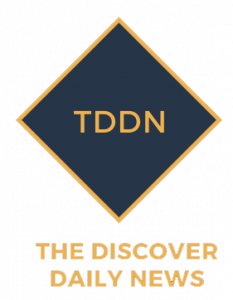The glory days of high yield savings accounts are over, and we weep over the devastation of our rapidly depreciating savings.
The good news is that the DBS multiplier account just added SGFindex to earn bonus interest, something we all desperately need.
But what the hell is SGFindex and how do we use it to get that bonus interest? Let’s find out.
SGFindex on the DBS multiplier accounts
Even if you are not a DBS multiplier account holder, you may have come across it in your search for a high yield savings account as it is one of the most attractive options available.
In short, DBS Multiplier offers bonus interest on your savings if you meet certain requirements.
The only requirement that is mandatory for everyone is the crediting of salary or dividends to the account.
Once you’ve done this, you can meet other requirements to receive bonus interest, such as:
Until recently, people aged 30 and over who had no salary or dividends to be credited to their account were not eligible for bonus interest through the DBS multiplier.
This included freelancers or self-employed people who did not receive a monthly salary, as well as those who took a break from work.
That has changed because now you can meet the mandatory requirement by linking your DBS account to SGFindex. And did I mention it’s free?
What is SGFindex?
SGFindex, or Singapore Financial Data Exchange, is a type of financial planning interface jointly set up by MAS and the Smart Nation and Digital Government Group (SNDGG).
SGFindex consolidates all of your financial information and links it to your SingPass. You can get the following information in one place:
- CPF account balances
- IRAS annual taxable income
- HDB home loan balance
- Balances in bank accounts
- Fixed-term deposits
- Credit card balances
- Credit balances
- Unit trust data
- CPF Investment Scheme (CPFIS) holdings
- Supplementary old-age provision stocks (SRS)
All government financial data will be accessible via SGFindex. This includes all information from the CPF Board, IRAS and HDB.
Meanwhile, all data from participating banks can only be released to SGFinDex after you have authorized them to do so. Your entitlement is valid for one year.
Currently the seven participating banks are:
- Citibank
- DBS / POSB
- HSBC
- Maybank
- OCBC
- Standard Chartered Bank
- UOB
Advantages and disadvantages of using SGFindex
The biggest benefit of using SGFindex is convenience. Instead of logging into different government and banking websites multiple times, you now have a one-stop shop where you can review most of your financial information.
If you are juggling multiple accounts, cards and credits from more than one bank, SGFindex will help you keep track of things.
Unfortunately, it’s handy not only for you, but would-be hackers, identification thieves, and so on as well. By consolidating everything in one place, you could potentially give these villains easy access to your financial information.
Is SGFindex Safe?
SGFindex uses a method for data transmission that is supposed to be secure. They claim that personal financial information is neither read nor stored and everything is encrypted when accessed.
For most laypeople, this explanation will suffice, but if you are really concerned it is a good idea to ask a cybersecurity professional for their opinion.
In the case of information from the banks, no data is collected until you have given your consent. So don’t worry, if you have a bank account where you hide your secret riches, nobody needs to know about it if you don’t connect this bank to SGFindex.
How to set up your SGFindex
You can access SGFindex via the website of a participating bank by first logging in and authorizing your bank to release data.
It can be difficult to find the website that you authorize SGFindex through as some banks require it on their main page while others have created a separate page. If you have a DBS account, you must first go to the NAV planner page.
Next, you will be asked to log in with your SingPass and authenticate your request. Upon successful completion, the bank will be displayed when you log into SGFinDex.
You will need to repeat this process with all the banks you use.
(For DBS multiple account holders, once you have authorized DBS to share information with SGFinDex, the bank should be able to automatically detect that you did so. Don’t forget to ask the NAV planner to check information on SGFinDex every month to meet the mandatory requirement of the multiplier account.)
Once you have all of your banks connected, there are many ways to access your SGFindex information – through one of your banks’ apps or websites, or by logging into the government’s MyMoneySense website.
You can also use the DBS Nav Planner app if you are not a DBS customer.
ALSO READ: Side Hustle Ideas For Students: How To Make Extra Money While Studying
This article was first published in MoneySmart.

